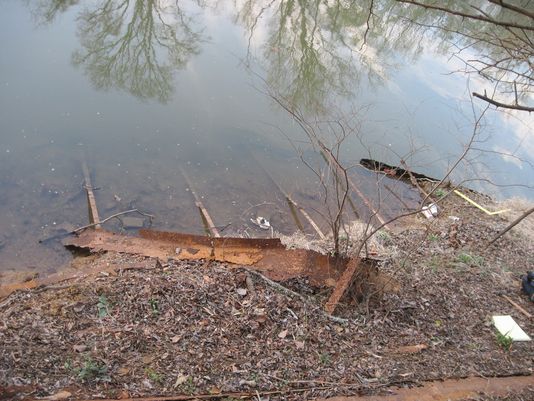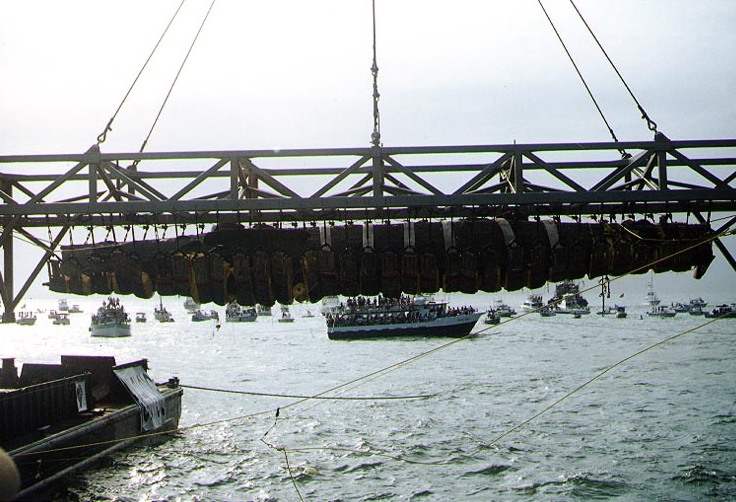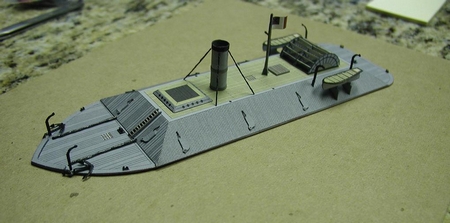
A local man living in downtown Shreveport has taken it upon himself to solve the mystery of lost Confederate submarines. Marty Loschen is a historian and archeologist who believes he knows what happened to the Confederate submersibles. The rumor is that they are somewhere in the waters near Shreveport, having been there since, the last two years of the Civil War.
Loschen is the director of the Spring Street Museum; he believes he has found the remains of the hand-propelled craft in the banks of Cross Bayou, which is about a half mile west of where the Confederate Navy had a shipyard. At the Cross Bayou’s mouth on the Red River, the facility was home to the leaky CSS Missouri and the fast-paced Webb.

A few months before the heavy rains came, Loschen and his brother were at Cross Bayou. There, they found what appeared to be decades-old rusted machinery among the trees that had overgrown the rusted pieces, suggesting that those rusted materials had been there for years. The site where they found the pieces was on a bank on Bowman’s chute near Bowman and Dowling Streets.
Loschen said that the area is breathtaking. He spends a lot of his time exploring the area, captivated mainly by the forgotten and abandoned parts. He showed reporters on his 1864 Venable Map of the Defenses where there are several buildings where he had found artifacts.
He had pointed at the sub base on the map as well as an old island. He explained that if the army was going to have a sub base, they most likely would have put it out there on the island. He also told reporters that if they looked at the map, they could coordinate the location of structures where he and his brother found the rusted machinery.
Loschen is convinced that he has found the subs; he now just has to wait for lower water levels to be sure. He explained that it is under 10 feet of water right now.

A famous diver, Ralph Willbanks, found wreckage of the submarine CSS Hunley right off of Charleston Harbor in 1995. He had visited Shreveport twice within the last 15 years to search for the local submarines. Willbanks and a team of diver researchers had made sonar and magnetometer searches of the Red River and parts of Cross Bayou and Cross Lake. They found old trucks from the flapper era, a dock that was a ferry link from Shreveport and Bossier City before bridges were built on the Red, and the remains of a Civil War gunboat known as the Iron Duke.
However, Willbanks never went as far as the shallower waters of Cross Bayou. This area traces through Ledbetter Heights and Allendale on the way to Cross Lake. New technology indicates that if he had gone a little further like Loschen suggests, he would have discovered the submarines.
Loschen happened to be a former student of the LSU Shreveport history professor Gary Joiner. Joiner had actually been working with Willbanks on the diving search for the past three decades. His research revealed that there are official records of the submarines. Joiner believes Loschen has found something, but, unfortunately, not the lost submarines.

Joiner explained that the metal straps aren’t stiffening ribs. The subs had been almost identical except one had one hatch instead of the two on the Hunley. They didn’t have ribs – they were done in the way of a boiler. Although this is disappointing news, there is still hope because there is still evidence that the subs really existed. Union spies and Confederate reports support their existence with the dimensions of the subs as well as the documented operations of putting mines in the river in case of a Union invasion. There were five submarines built. One was sent to the Houston/Galveston area in Texas and lost in transit.
There were two historians on the job, Eric Brock and Katherine Brash Jeter. They did extensive research and found that there were a number of machinists and engineers who had built the Hunley and other subs for the South. Those subs were built right in Shreveport during the years of conflict.
Several decades before this, a fisherman on the Red River had noticed something sticking out of the bluff. It turned out to be a wooden dugout canoe, dating back to several centuries. Known wrecks of Civil War-era vessels included the transport Kentucky and the Union’s USS Eastport, which both sunk during the Red River Campaign in early 1864.
Joiner still believes that Loschen’s subs are out there, most likely covered with earth or mud, but still in good condition.